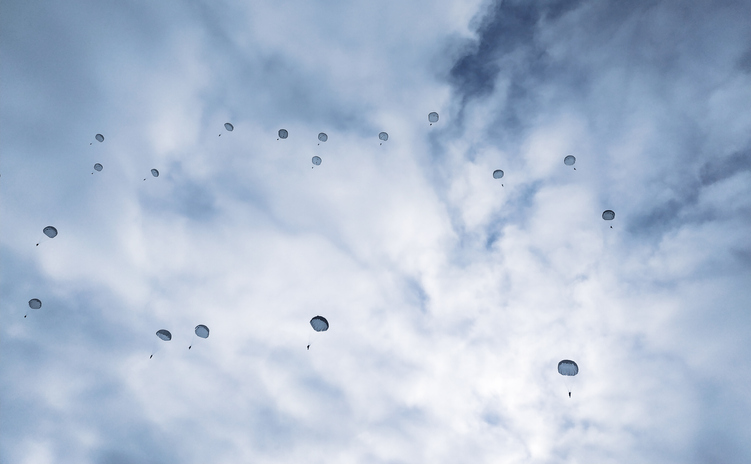If in the mid twentieth century you had lived in Bavaria, you would have become aware that sometimes at night would come the deep growling of a large transport plane flying very low and beneath all radar. Only faint safety lights might be visible. Soon silence and darkness would return.
Newscasts would report nothing. Perhaps there were rumors. What you had probably heard was the thunder of a USAF C-130 Hercules transport making a training flight. Its mission would be to parachute in a Special Forces “A” team to join friendly guerrillas deep in assumed enemy occupied territory.
After a twisting route over “enemy” lines the bird would be nearing the drop zone — the “DZ.” On that remote pasture, a ground crew simulating friendly insurgents would have set up a drop pattern of a few small gasoline-in-sand buckets to be torched-off a few seconds before the C-130’s flyover. No radio communication was employed except for possible safety. For local farmers it would have been just another peaceful evening.
Now imagine the tense paratroopers waiting to jump. Thoughts had perhaps turned back to the long-ago airborne assault on Normandy where trailblazers had jumped into truly enemy territory. Many had darkened their faces and wore Mohawk haircuts. Some had roared “Geronimo” as they jumped. Some had honed their trench knives to razor sharpness. Surely some had prayed. They had attacked and won.
Now on this training run the pilot switches on the red light over the exit door, which is opening to the blackness outside.
“Stand up,” yells the jumpmaster. Troopers struggle to their feet under their heavy loads.
“Hook up,” comes the next order. Troopers snap their ripcords to the plane’s overhead static line. Each checks out the ripcord-static line solid attachment of the jumper ahead of him and gives him a confirming slap on the back. Seconds later the pilot sees the DZ out ahead being lit up. He switches the red door light to green.
“GO! GO! GO!” shouts the jumpmaster. Green Berets leap out into the night sky and count to four. In those four seconds their chute bags will be pulled open automatically by their tethered ripcords. The actual chutes are then deployed by the whirlwind of four huge propellers.
The most obvious risk has passed unless the jumper feels no welcoming shock and must activate his reserve parachute. More common dangers are for a jumper to become entangled with another jumper’s chute. Winds aloft could blow him off course. The C-130 could have missed the DZ. Or a jumper could land in a darkened treetop and fall clear through to the ground.
The last tripped me up and the free fall broke my leg. That was a half century ago, but I still keep the resulting crutches right here in the garage at PVE. They remind me still that nothing is a sure thing.




